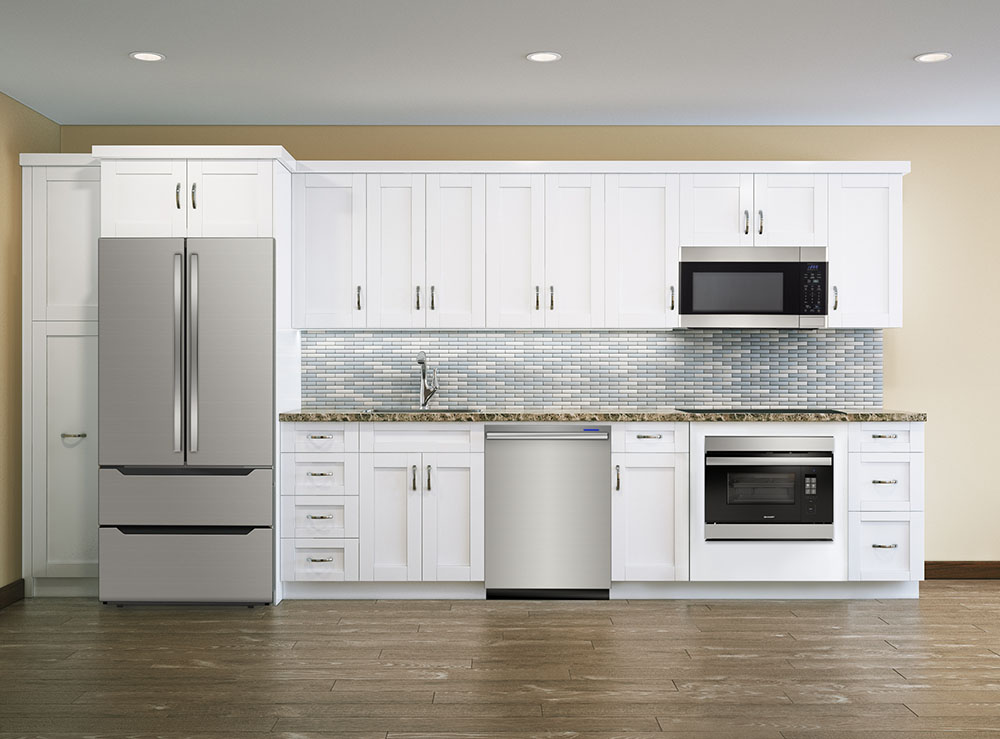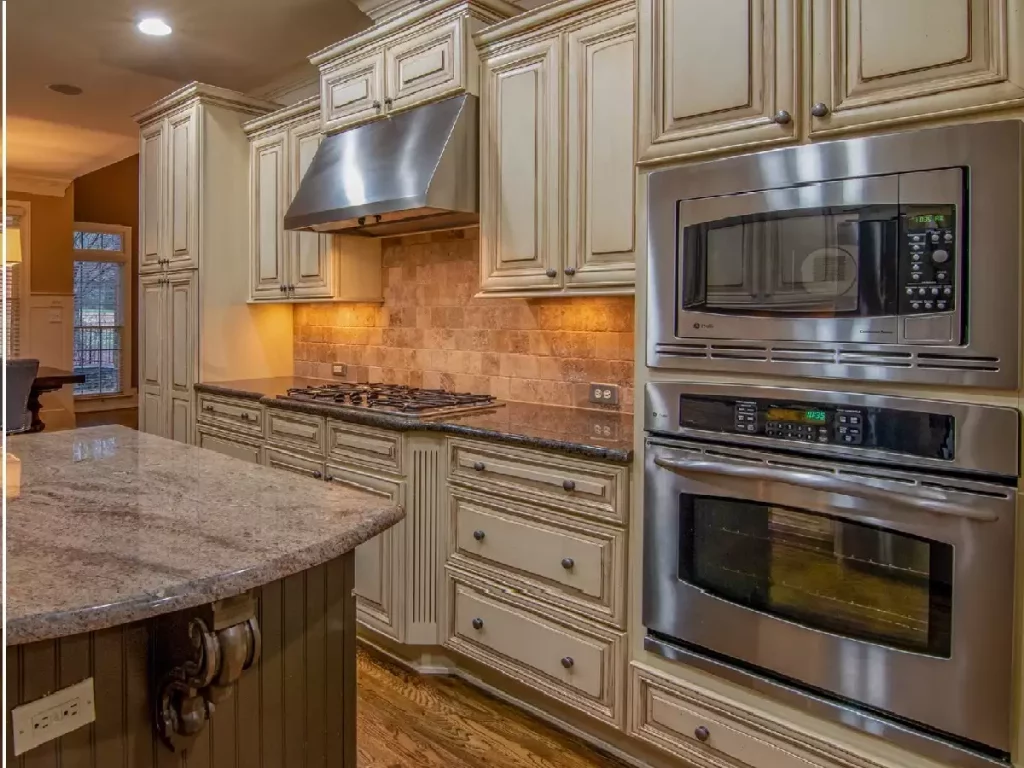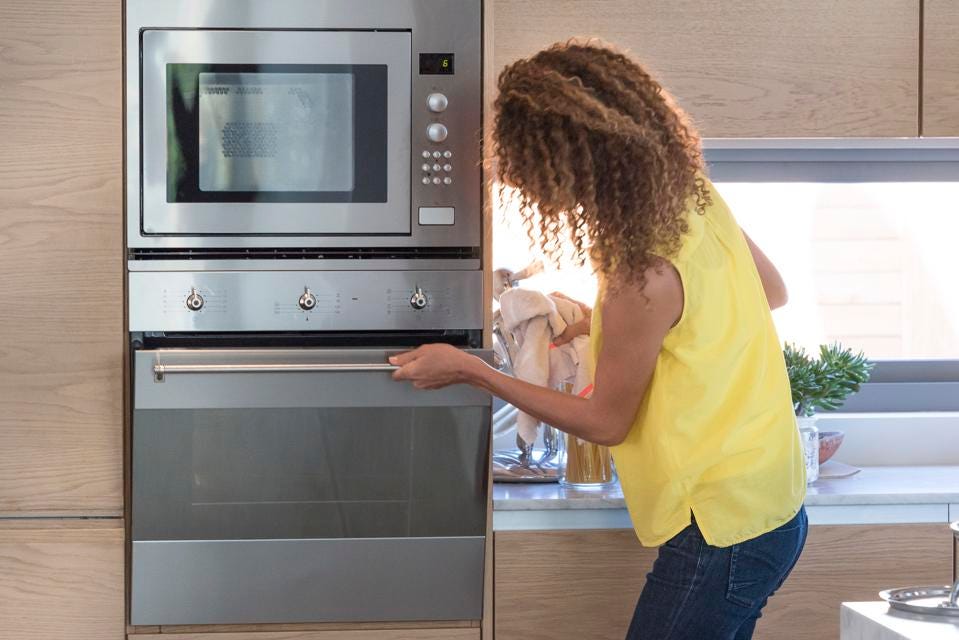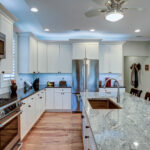The built-in microwave is a functional kitchen appliance. Different color options allow you to match it to the kitchen’s interior. This article will tell you how to choose a microwave design and what to consider when buying. (Also, you can read more elsewhere.)
Features of Built-in Microwave Ovens
Built-in microwave ovens have advanced features. Depending on the model, the list is varied. Here is what it includes:
- Automatic programs. They simplify defrosting and subsequent cooking processes, providing control of power and temperature mode.
- Microwave “quick start” function. Allows access to the maximum power in one click. If you press the button 1, 2, or 3 times, the appliance turns on the maximum power for 30, 60, or 120 seconds.
- Combination mode. It saves time when cooking.
- Keep warm. With this feature, your oven maintains the food temperature for 15 minutes after cooking. If you don’t press a button or open the door two minutes after the end of cooking, the oven automatically starts keeping the food warm.
- Popcorn button. Automatic program for making popcorn. The temperature mode and power are designed for a 100-gram cooking container.
- Clock and timer. For setting the time of start, end, and duration of cooking.
- Changing languages. Allows you to select the language of the messages on the appliance display.

Advantages of Built-in Microwave Oven
Here are the most impressive benefits of a built-in microwave:
- It’s easily embedded into the kitchen’s interior.
- It saves space as it’s built-in in kitchen niches and cabinets.
- Cooking speed. Defrosting and heating in a microwave oven is faster than on a hob or in an oven.
- No oil or fats are used. Heating oil releases carcinogens. Heating with microwaves does not result in that.
- The useful properties of food and its structure are preserved. When defrosting in the microwave, foods do not lose a lot of water.
Besides traditional microwave ovens, appliances with the grill feature are also in demand. This feature expands cooking possibilities.
Disadvantages of Built-in Microwave Ovens
The disadvantages of built-in microwave ovens include microwave radiation. Leading manufacturers are trying to mitigate this disadvantage — the body of the built-in microwave oven is constructed to protect the user’s health. You should follow the instructions in the operating manual.
In most cases, the following damage to the oven should be repaired by an expert or a service center:
- The door is bent;
- door hinges are loose;
- the body, door, or walls have noticeable damage, such as holes or cracks.
Also, among the formal disadvantages are the limitations of cooking and processing food with the microwave:
- Eggs in their shells. The possible explosion of the product, including after its removal from the device.
- Pies with large-sized fillings. It will be best to purchase an oven for cooking and heat-treating such baked goods.
- Prolonged cooking. Improper manual selection of power and temperature can dry out foods and cause them to catch fire. Your oven is not meant for dehydrating bread and herbs.
- Microwave is only for cooking and processing food. Attempts to dry laundry inside the appliance are common — it is not safe.
The Nuances of Selection and Operation
When selecting a microwave oven, pay attention to the material of the working chamber. Here is what manufacturers apply:
- Enamel. Inexpensive material, not resistant to scratches and damage.
- Acrylic. It is used in microwave ovens of low power.
- Bioceramics. This material is safe for health. Has a disadvantage: when exposed to high temperatures, there is a risk of cracks and damage.
- Stainless steel. The material that many brands choose when producing new models of microwave ovens.
When installing a built-in microwave oven, consider the size of the kitchen niche and the appliance. Here are available sizes with compensation strip:
- 60 x 36 cm;
- 60 x 38 cm;
- 60 x 42 cm;
- 60 x 45 cm.
Available sizes without it are 60 x 35 cm and 60 x 45 cm.
Depending on the appliance’s model, the volume of the cooking chamber can be compact (26 liters) or spacious (46 liters).

Built-in microwave ovens have two types of control:
- Vertical side control. The control panel is located on the side. It has a classic user interface. The location is also convenient for building the appliances into a kitchen. You can open the door from the side.
- Horizontal top control. The control panel is located on top of the door opened from top to bottom, as in ovens. This control placement allows you to create a large working chamber in the appliance — 46 liters.
When selecting a microwave oven to match the design of the kitchen interior, consider the style of performance of the appliance:
- vitro line — all-glass fronts in three possible colors;
- contour line — glass fronts with a steel frame;
- pure line — the predominance of glass elements, solid stainless steel handles.
Usually, microwave ovens are available in stainless steel, graphite gray, diamond white, and black obsidian.
Conclusion
One of the main advantages of built-in microwaves is that they don’t take up free space. One of their disadvantages is the high cost. However, spaciousness is well worth some extra money!






